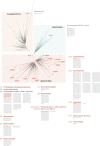Decoding the ocean's microbiological secrets for marine enzyme biodiscovery
- PMID: 30534987
- PMCID: PMC6322442
- DOI: 10.1093/femsle/fny285
Decoding the ocean's microbiological secrets for marine enzyme biodiscovery
Abstract
A global census of marine microbial life has been underway over the past several decades. During this period, there have been scientific breakthroughs in estimating microbial diversity and understanding microbial functioning and ecology. It is estimated that the ocean, covering 71% of the earth's surface with its estimated volume of about 2 × 1018 m3 and an average depth of 3800 m, hosts the largest population of microbes on Earth. More than 2 million eukaryotic and prokaryotic species are thought to thrive both in the ocean and on its surface. Prokaryotic cell abundances can reach densities of up to 1012 cells per millilitre, exceeding eukaryotic densities of around 106 cells per millilitre of seawater. Besides their large numbers and abundance, marine microbial assemblages and their organic catalysts (enzymes) have a largely underestimated value for their use in the development of industrial products and processes. In this perspective article, we identified critical gaps in knowledge and technology to fast-track this development. We provided a general overview of the presumptive microbial assemblages in oceans, and an estimation of what is known and the enzymes that have been currently retrieved. We also discussed recent advances made in this area by the collaborative European Horizon 2020 project 'INMARE'.
Figures


References
-
- Costessi A, van den Bogert B, May A et al. . Novel sequencing technologies to support industrial biotechnology. FEMS Microbiol Lett 2018;365:1–13. - PubMed
-
- Evans J. Environmental markets for biotechnology. Report IO019C BCC; 2013.
-
- Glöckner FO, Stal LJ, Sandaa R-A et al. . Marine microbial diversity and its role in ecosystem functioning and environmental change. In: Calewaert JB, McDonough N (eds). Marine Board Position Paper 17. Ostend, Belgium: Marine Board-ESF, 2012.
-
- Harrison JP, Gheeraert N, Tsigelnitskiy D et al. . The limits for life under multiple extremes. Trends Microbiol 2013;21:204–12. - PubMed
Publication types
MeSH terms
LinkOut - more resources
Full Text Sources
Miscellaneous

